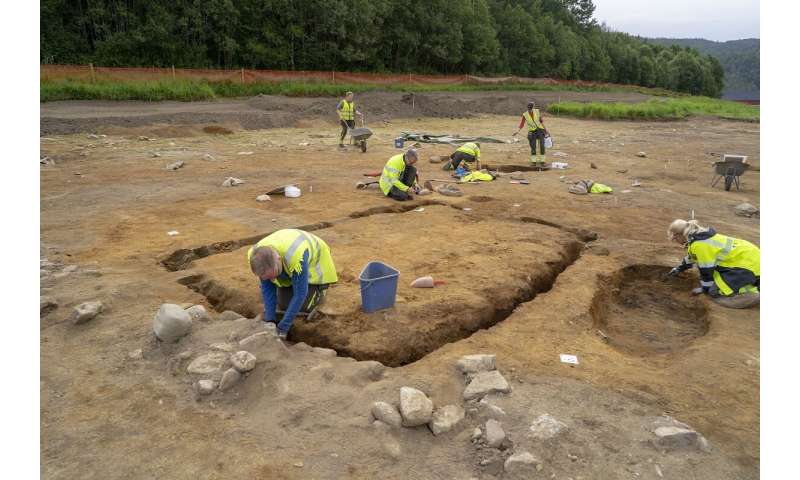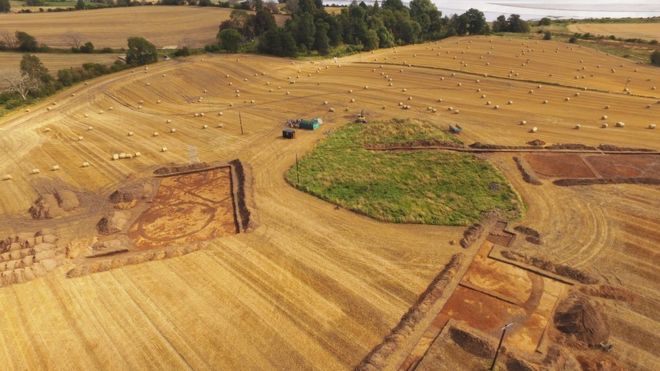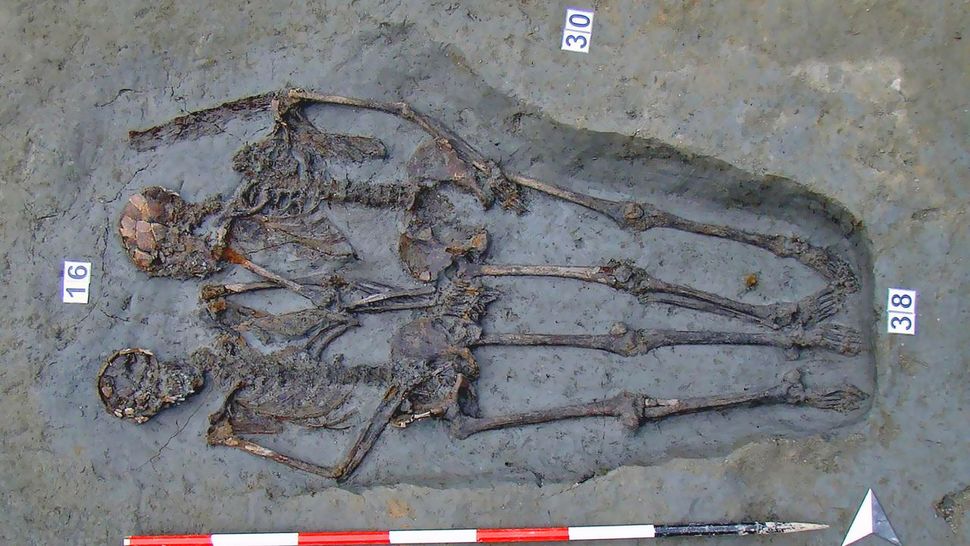The construction style of the mortuary house is similar to that used for stave churches.
Credit: Raymond Sauvage, NTNU University Museum
A Viking Age mortuary house was discovered during the excavation of the burial ground of one of the Viking Age farms on Vinjeøra in Hemne in Trøndelag. The house measured five by three meters. It had corner posts, and the walls were made of standing planks, in a building style similar to that used in early stave churches. Archaeologists could see that the building was solidly constructed, even though the only thing that remains is a rectangular ditch with a slight impression from the house and some retaining stones where the walls once stood.
Even though the style of building is typical of the Viking Age, this house was far from ordinary. Archaeologists think it was most likely home to a Viking grave. Hundreds of years of farming in the area have plowed away the grave that was likely found inside the structure.
"We can see that the house once stood in the middle of a burial mound. That's how we know that there probably was a grave inside the house," said Sauvage, who is project manager for the dig.
The burial mound itself is also gone, but the ring ditch that once surrounded the mound has been filled in, rather than plowed away, and is therefore still visible.
Read the rest of this article...

:focal(1000x990:1001x991)/https://public-media.si-cdn.com/filer/79/75/79753633-9cdf-44f0-aa57-15bdffb39389/gettyimages-152200767.jpg)





